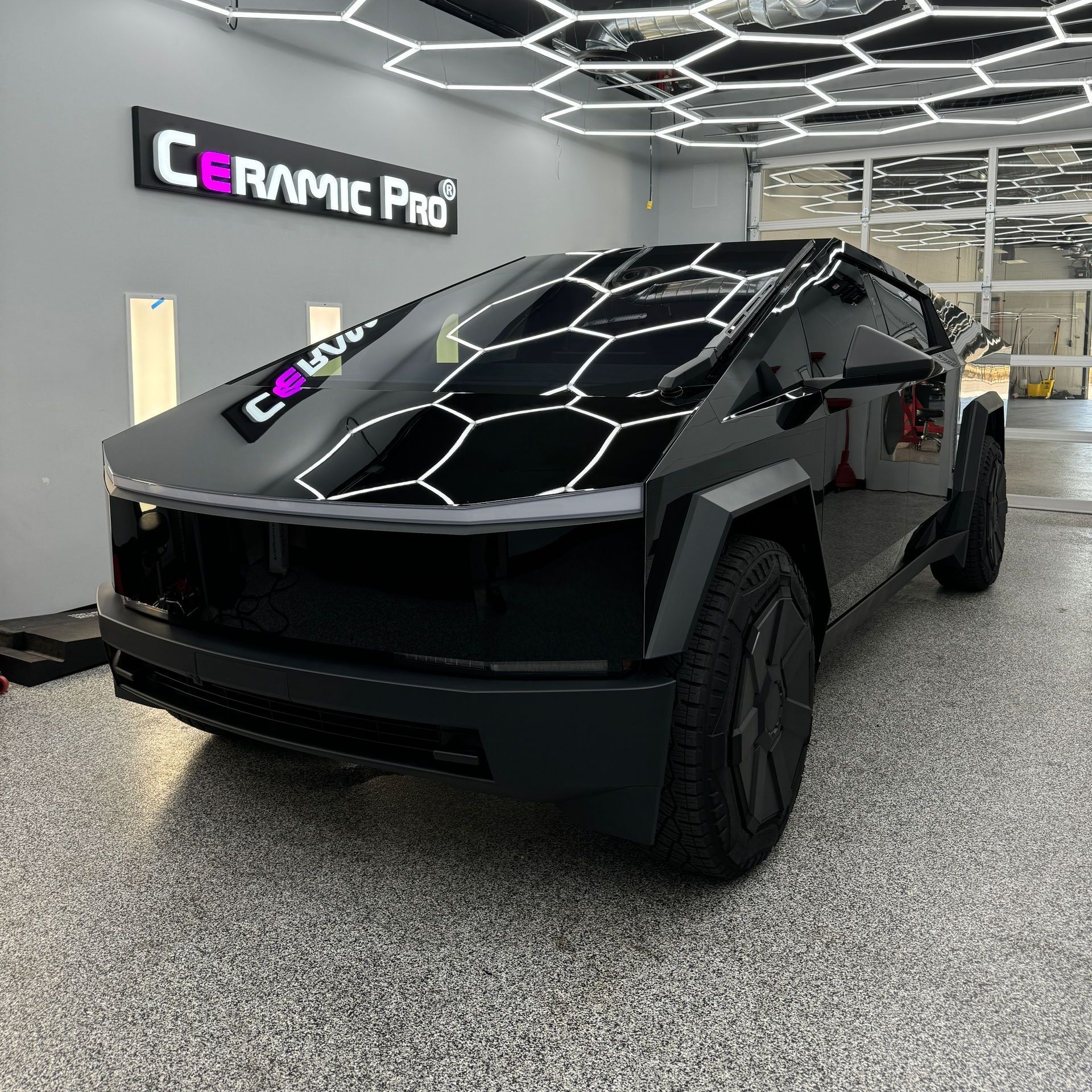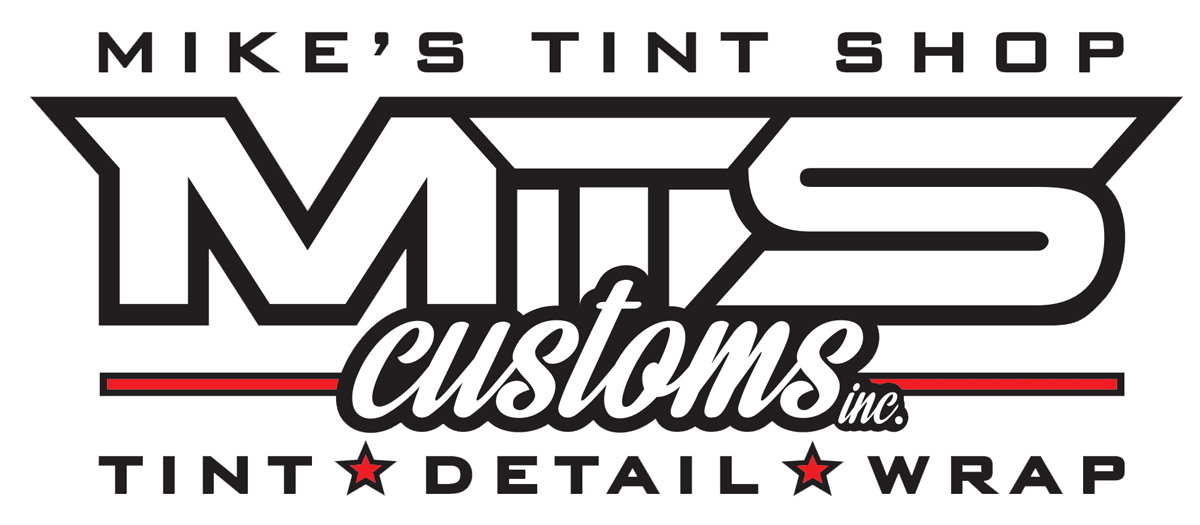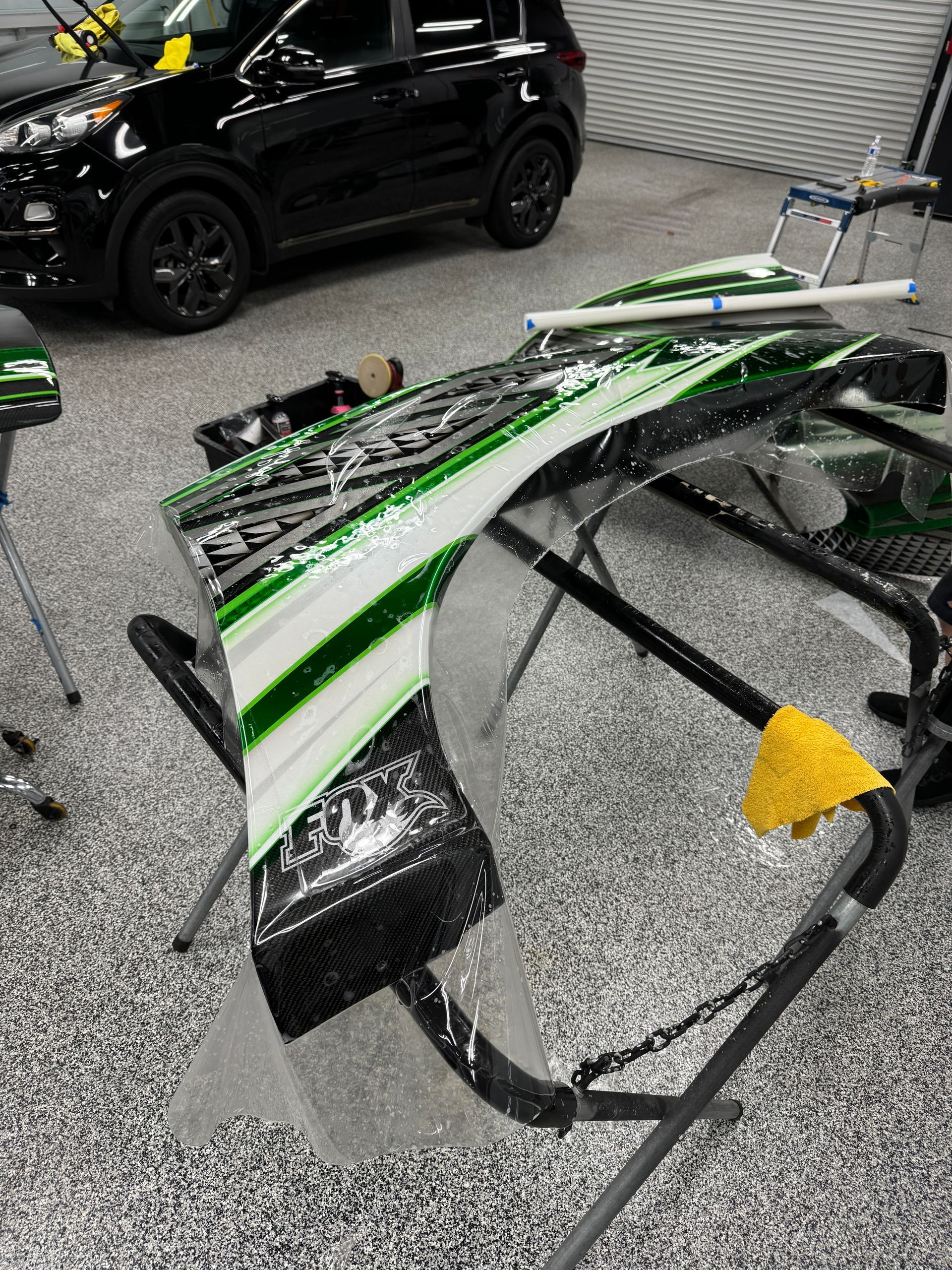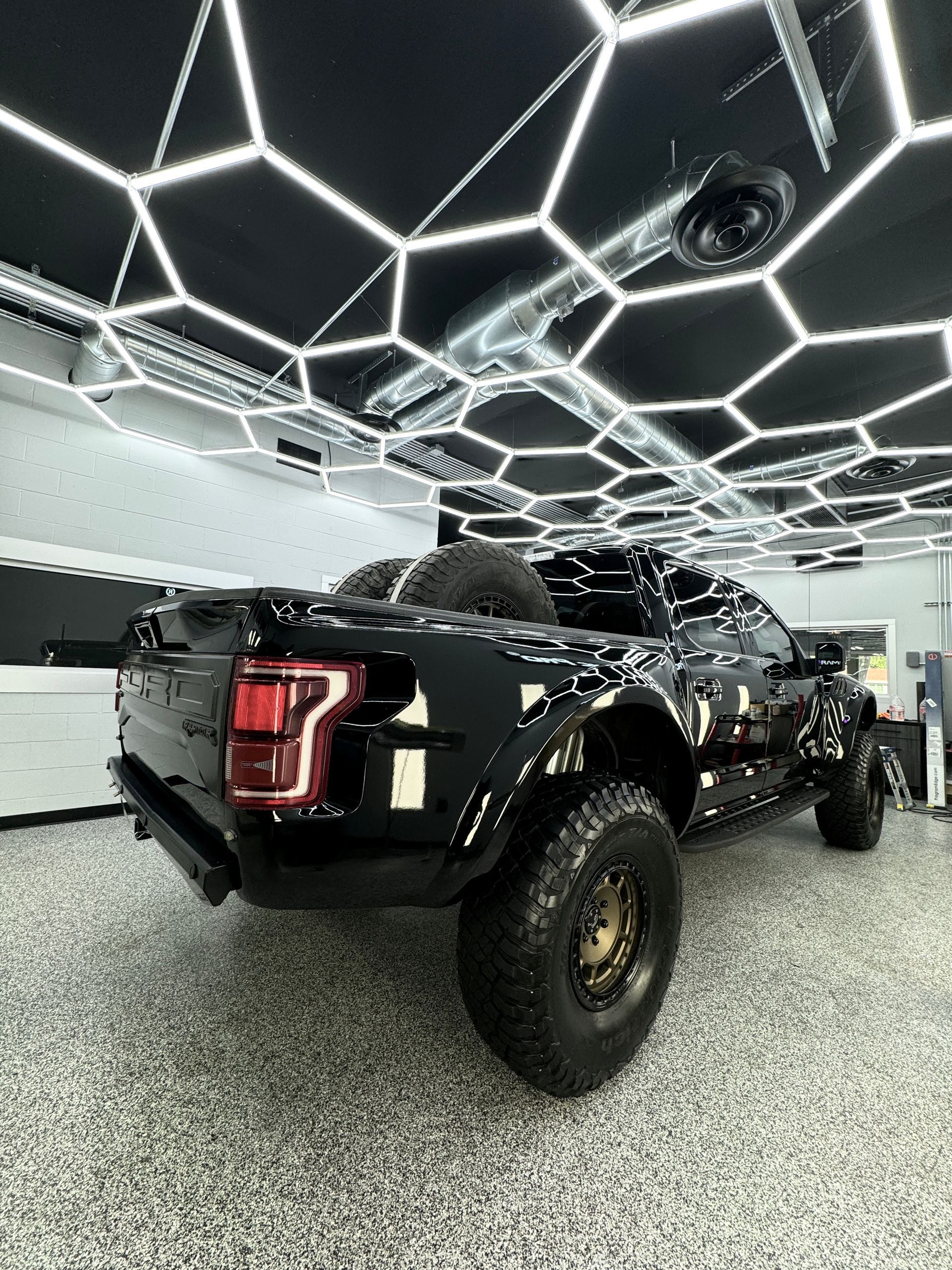5 STAR QUALITY SERVICE
The Duration: How Long Does Ceramic Coating Take to Cure Effectively?
When it comes to protecting your vehicle's paint, ceramic coatings are like armor for your prized ride. They offer tough, long-lasting defense against dirt and California's harsh UV rays—exactly what Orange County car enthusiasts need. But here's what many don't realize: applying a ceramic coating isn't as simple as putting it on and driving away.
Understanding the curing process is crucial for getting the most out of your investment and achieving that factory-quality finish you're after.
Just because the coating feels dry doesn't mean it's ready to tackle the elements. In this article, we'll break down how long it takes for ceramic coatings to cure effectively and why patience during this time is essential for your car's showroom shine and protection.
Quick Answer: Ceramic coatings typically require a cure time of 24 hours to several days, depending on environmental factors like temperature and humidity. While many products may feel dry shortly after application, achieving optimal bonding and durability can take up to 30 days. It's essential to avoid washing your vehicle during this period for the best results.

Factors That Influence Curing Time
Product Type Makes a Difference
The type of ceramic coating you choose significantly affects how long it takes to cure properly. Each brand has its unique formulation, leading to varying drying times. For instance, premium products like Ceramic Pro typically suggest a curing duration of 14 to 21 days. However, real-world experience from professional installers shows that many coatings achieve effective curing in 48 to 72 hours under ideal conditions.
Here's what matters: pay attention to your specific product's recommendations and trust the expertise of seasoned professionals who've worked with these products daily.
Environment Is Everything
The environment where you apply your ceramic coating plays a crucial role in curing time. For best results, application should be performed in a controlled space—like a clean, well-ventilated garage—where temperature and humidity can be managed effectively.
High humidity levels can prolong the curing process considerably. Ideally, you want to maintain humidity around 40% to 60%. If the air gets too damp, it slows down the chemical reactions necessary for proper bonding. Conversely, proper ventilation enhances airflow, allowing solvents to evaporate quickly and encouraging faster curing.
Professional shops prioritize optimized environments to ensure your ceramic coating cures correctly—it's one of the reasons why professional installation often delivers superior results.
Application Technique Matters
The thickness of the coating application influences overall curing time. Thicker layers take longer to cure than thinner ones. A standard application thickness of about 1-2 mils usually cures in approximately 24 to 48 hours. Multiple layers or thicker coatings require extended curing time.
Additionally, ensuring surfaces are perfectly clean and prepped before application enhances adhesion and can help reduce overall curing time. This is why professional preparation is so critical to achieving that flawless finish.
Bottom line: While waiting might feel frustrating—especially when you're eager to show off your freshly coated ride—it's critical not to wash or excessively expose your car during the initial days post-application. Full chemical bonding can take up to 30 days, and rushing this process can compromise durability.
How Weather Impacts Curing
Temperature Control
Temperature stands as one of the most significant factors affecting how your ceramic coating adheres and sets. Maintaining an ideal temperature around 70-75°F ensures optimal bonding conditions.
If temperatures exceed 80°F, the process might speed up initially, but it could lead to issues like uneven drying or improper adhesion. On the flip side, cooler temperatures will slow down the curing process, potentially adding hours or even days to achieve desired results.
Humidity Challenges
High humidity can significantly slow down solvent evaporation in ceramic coatings, resulting in surfaces that remain tacky longer than expected. If you've ever tried painting on a humid day, you know how moisture can extend drying times.
To avoid complications, aim for relative humidity below 60% during and after application. Professional installers monitor these conditions closely to ensure optimal results—another advantage of trusting the experts.
Typical Curing Time Ranges
DIY vs. Professional Grade Products
DIY Ceramic Coatings: Most consumer-grade products require an initial curing period of 24 to 48 hours. During this phase, the coating bonds with the surface, but it's still vulnerable to moisture and contamination.
Full Cure Phase: Maximum hardness develops over 7 to 21 days, depending on environmental conditions. This isn't just waiting time—it's when your coating achieves its full protective potential.
Professional Grade Coatings: Advanced products like those used by professional installers may require up to 30 days to reach optimal hardness. While this extended duration might seem inconvenient, think of it as an investment in long-term durability and that premium finish you're paying for.
Best Practices for Effective Curing
The No-Wash Rule
After application, avoid washing your vehicle for at least 5-7 days. This waiting period is crucial because washing introduces moisture and chemicals that can disrupt the bonding process. Light exposure to rain after 24 hours is generally acceptable, but avoid intentional water exposure.
Controlled Environment Storage
Keep your vehicle in a controlled environment whenever possible. A garage protects from contaminants like dust and debris while shielding from harsh weather. If garage storage isn't available, consider a quality breathable car cover.
Follow Manufacturer Guidelines
Each ceramic coating product has specific requirements for optimal curing. Professional installers follow these guidelines religiously—it's why their results consistently outperform DIY attempts. Ignoring manufacturer specifications can compromise your investment.

Common Mistakes to Avoid
Immediate Exposure to Elements
One of the biggest mistakes is driving immediately after application. This exposes the coating to dust, dirt, and road debris before it has properly bonded. Keep your vehicle sheltered for at least 24-48 hours.
Overlayering Too Soon
Applying multiple coats before each layer has adequate curing time leads to uneven bonding and poor performance. Patience between layers is essential for professional results.
Ignoring Environmental Conditions
Extreme temperatures and humidity affect how effectively the coating adheres. Monitor conditions during the curing period to ensure optimal results.
Ensuring Long-Lasting Results
Regular Maintenance
Use pH-neutral car shampoo for washing—harsh detergents strip protective layers. Think of it like caring for any premium investment: gentle, consistent care maintains performance and appearance.
Periodic Inspections
Check areas prone to wear, especially front bumpers and side panels. Early detection of any degradation allows for touch-ups before major reapplication becomes necessary.
Professional Touch-Ups
Small spots losing their water-repelling abilities can often be addressed with spot treatments, saving time and money compared to full reapplication.
The Bottom Line
Ceramic coating curing is about patience and proper care. While 24-48 hours gets you basic protection, full benefits develop over weeks. Trust the process, follow professional guidelines, and you'll enjoy lasting protection with that factory-quality finish that turns heads.
For Orange County drivers dealing with intense sun and highway conditions, properly cured ceramic coating isn't just protection—it's peace of mind knowing your investment is working as intended.
Final Thoughts
Understanding ceramic coating curing times isn't just technical knowledge—it's the key to maximizing your investment in vehicle protection. Whether you're driving a Tesla through Orange County traffic or showcasing your BMW at weekend car meets, proper curing ensures your ceramic coating delivers the showroom-quality results you expect.
The difference between a coating that lasts months versus years often comes down to those crucial first few weeks after application. Professional installers know this, which is why they emphasize proper curing conditions and provide detailed aftercare instructions. When you choose quality products and follow proven curing practices, you're not just protecting your paint—you're preserving your vehicle's value and your pride of ownership.
Remember, the best ceramic coatings are only as good as their application and curing process. Take the time to do it right, and your vehicle will reward you with years of enhanced protection, easier maintenance, and that deep, glossy finish that makes your car stand out in any parking lot.
Ready to protect your investment with professional-grade
ceramic coating? The experts who understand both the science behind proper curing and the demands of Orange County driving conditions are just a consultation away.





